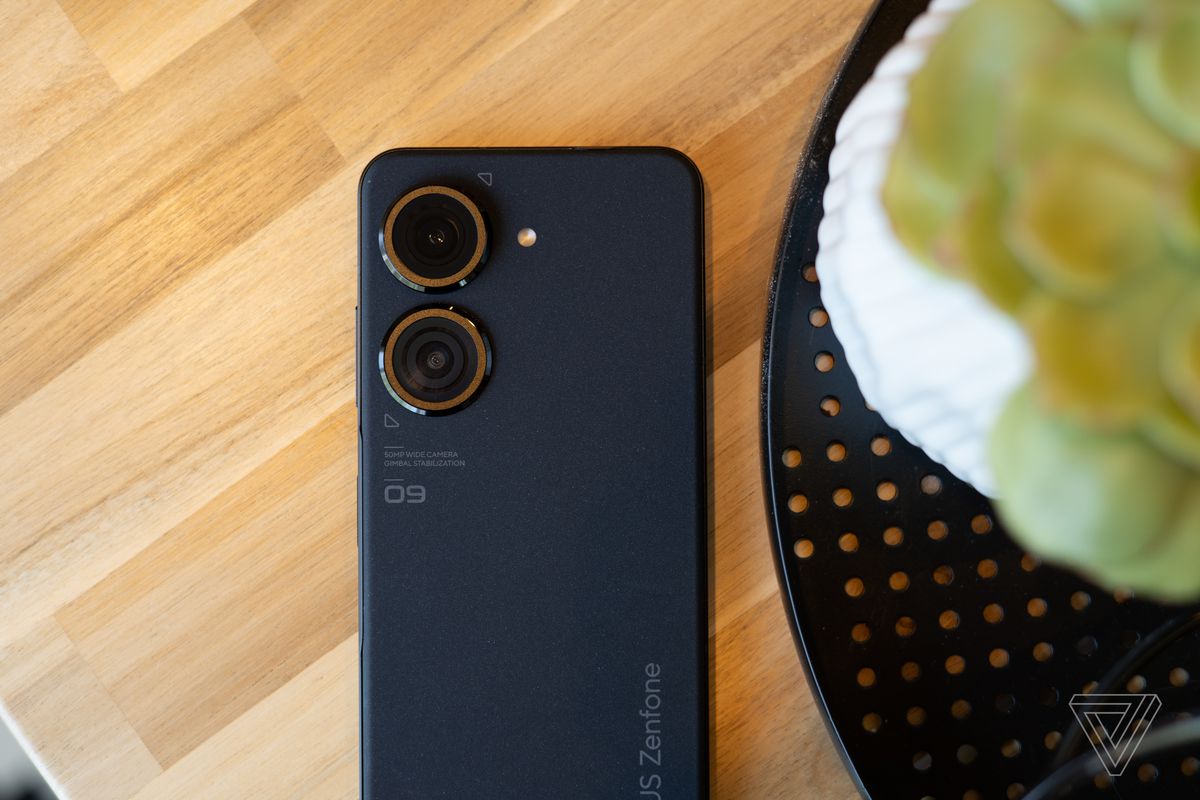Zenfone 9, Like 8 last year, is the rare Android phone that prioritizes small size over large screen or battery size. Still my heart! But the new story this year is the phone’s camera and stabilization system: instead of just moving a single lens element to compensate for camera shake, The whole main camera The lens, the sensor, it’s all moving. It’s a unique way to battle some of the biggest enemies of mobile photography: shaky, low-light video footage.
The Zenfone 9 is small but powerful and continues the 8’s tradition of including top-tier specs in a compact phone. The screen is a 5.9-inch 1080p OLED display with a smooth 120Hz refresh rate, and the phone uses the Snapdragon 8 Plus Gen 1 chipset — the latest and greatest from Qualcomm. The base model includes 8GB of RAM and 128GB of storage, and the phone is IP68 certified.

There is a 4,300mAh battery that supports 30W fast charging and an adapter included in the box, but wireless charging is not supported. The back panel of the phone is textured composite plastic, although the frame is made of sturdy aluminum, and the front panel is protected by Gorilla Glass Victus. And there is a headphone jack! How thoughtful.
There are only two rear cameras on the Zenfone 9’s back panel, which is a good thing: there are no redundant depth sensors or macros here. The 50MP main camera sensor and f/1.9 aperture are the stars of the show with what Asus calls a 6-axis hybrid OIS/EIS gimbal stabilizer. Below that, there’s a 12MP ultrawide camera that does double duty as a macro camera, as well as a 12MP front camera.
The main camera stabilizer compensates for movement on the x- and y-axis (side-to-side, up and down) but also uses information from the gyro sensor to correct abrupt forward and backward z-axis movements. Asus says this makes the camera able to compensate for three degrees of movement, compared to one degree on the Zenfone 8, which uses traditional OIS. Better shake compensation means the camera should be able to use slower shutter speeds and capture more light in low-light situations, resulting in better detail and colour. It’s a more powerful system than the usual OIS or even the sensor-based stabilization that Apple uses in some iPhone 13 cameras.

Including this type of installation requires a rethink of how the camera module communicates with the processor. The cable connecting the two should be shorter and arranged in an S-shape rather than a pleated configuration. The tape itself is softer as well, to reduce inertia on the camera unit. It’s all hidden inside the phone out of sight, of course, but the results are visible on the surface: with the camera in video mode, you can actually see the entire camera package moving under the large, fixed external lens element. Seriously, it’s wild.
Zenfone 9 will be sold unlocked in the US, but the price is still to be determined; In Europe, it will cost 799 euros, which is about 800 US dollars (sorry for your currency, European friends). It will be available first in Taiwan, Hong Kong, and parts of Europe.
Photo by Alison Johnson/The Verge

“Freelance web ninja. Wannabe communicator. Amateur tv aficionado. Twitter practitioner. Extreme music evangelist. Internet fanatic.”
